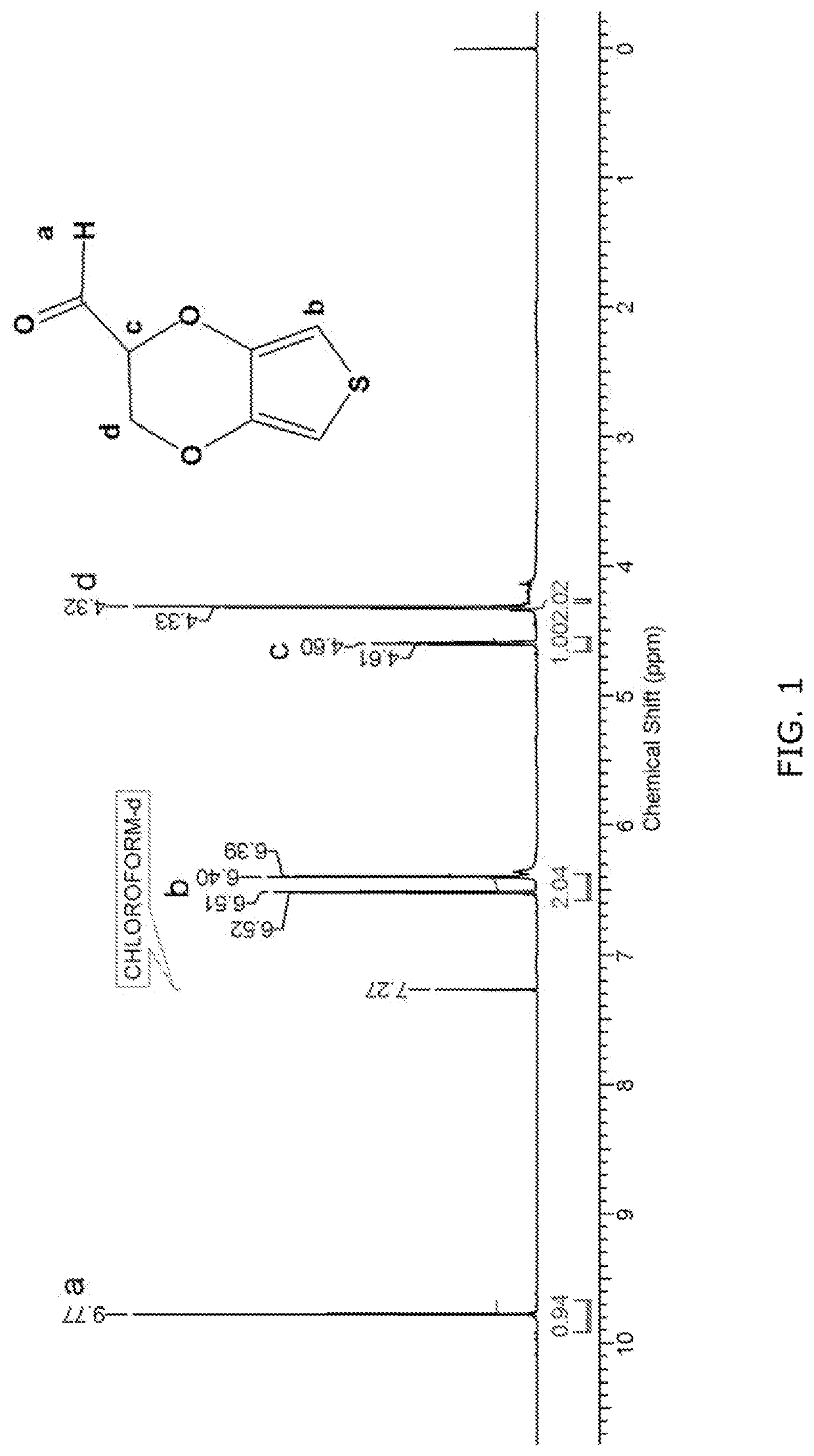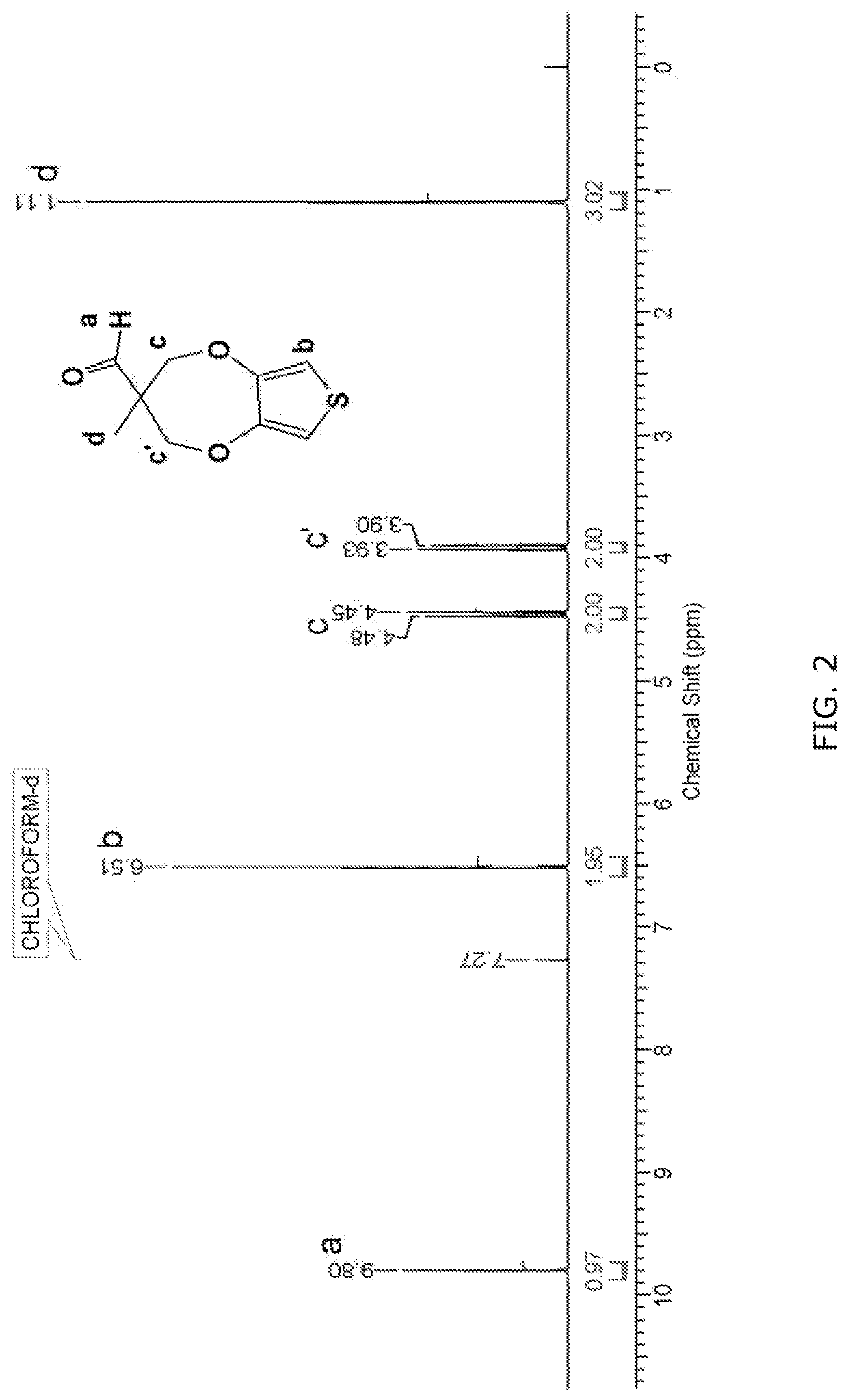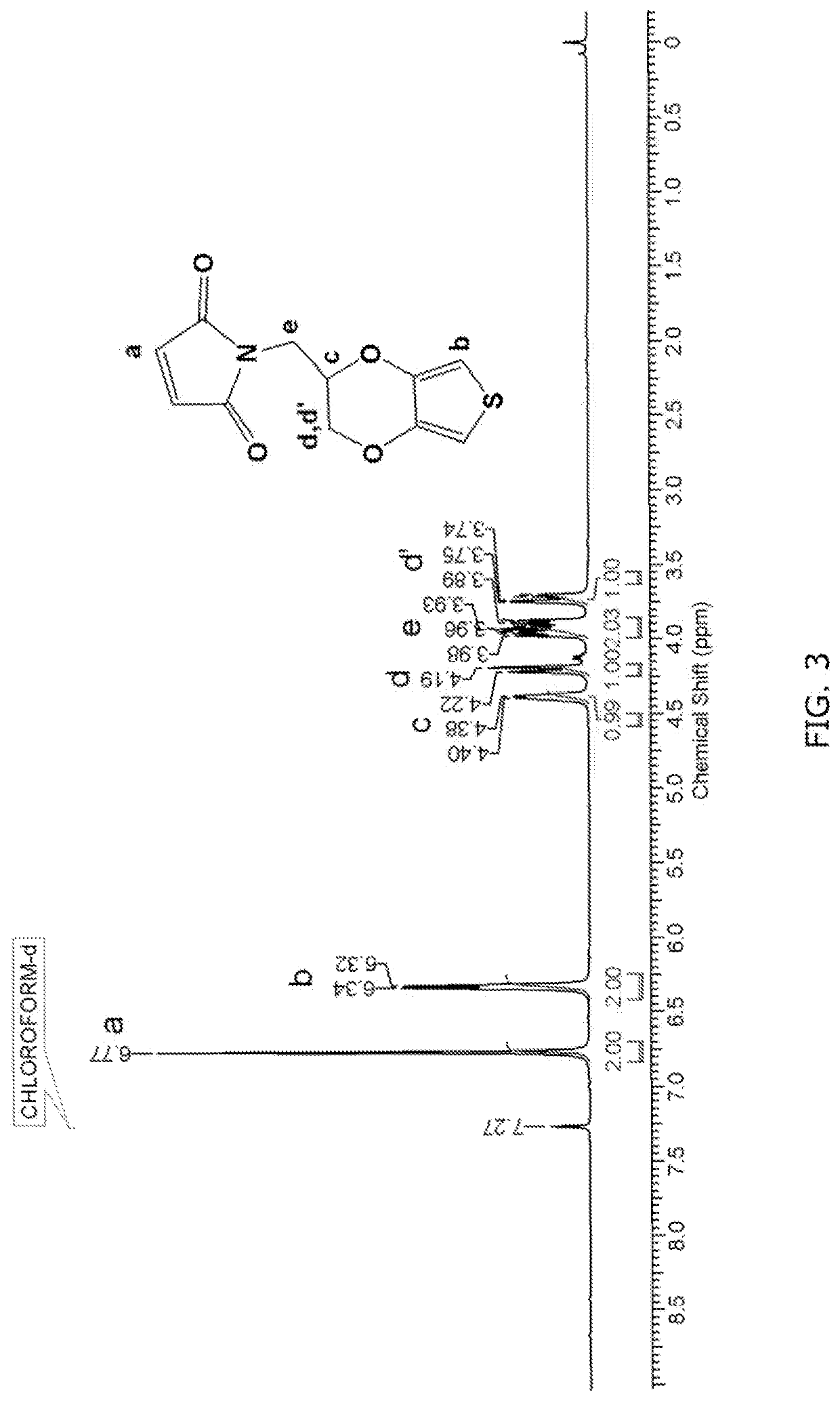Biofunctional thiophene monomers and polymers thereof for electronic biomedical devices
- Summary
- Abstract
- Description
- Claims
- Application Information
AI Technical Summary
Benefits of technology
Problems solved by technology
Method used
Image
Examples
examples
[0119]Examples of the present invention will now be described. The technical scope of the present invention is not limited to the examples described below.
[0120]MATERIALS
[0121]Materials and their source are listed below:
[0122]Hydroxymethyl EDOT (EDOT-OH), Dess-Martin periodinane, maleic anhydride, glacial acetic acid, 1-[Bis(dimethylamino)methylene]-1H-1,2,3-triazolo[4,5-b]pyridinium 3-oxide hexafluorophosphate (HATU), Diisopropylethylamine (DIPEA) 3,4-dihydroxyphenethylamine (Dopamine), cholesterol, 4-(Dimethylamino)pyridine (DMAP), lithium perchlorate (LiClO4), propylene carbonate (PPC), and N-(3-Dimethylaminopropyl)-N′-ethylcarbodiimide hydrochloride (EDCI) were purchased from Sigma Aldrich Chemicals, USA and were used as received. EDOT-COON was purchased from China. ProDOT-OH, EDOT-NH2, EDOT-N3 and Tyramine-Maleimide were synthesized according to literature procedures. Sodium thiosulfate, sodium sulfate, sodium hydroxide and hydrochloric acid were procured form fisher scientific...
example no.1
Example No. 1
Synthesis of 2′-Carbaldehyde-3,4-ethylenedioxythiophene (EDOT-aldehyde)
[0130]EDOT-aldehyde was synthesized starting from commercially available EDOT-OH by the route illustrated below in Scheme 4.
[0131]Into a 50 mL two necked round-bottom flask fitted with a magnetic stirring bar were added Dess-Martin periodinane (0.443 g, 1.05 mmol) and dry dichloromethane (20 mL). EDOT-OH (0.150 g, 0.871 mmol) was added to the reaction mixture and stirred at room temperature for 12 h, while consumption of starting material was monitored by TLC. After the reaction was complete, 1M sodium thiosulfate (20 mL) was added. After stirring for 15 minutes, the phases were separated and the aqueous phase was extracted with dichloromethane (2×20 mL). The dichloromethane solution was washed with saturated brine solution (2×20 mL) and dried over anhydrous sodium sulfate, filtered and evaporated under reduced pressure. The crude product was purified by column chromatography using petroleum ether: e...
example no.2
Example No. 2
Synthesis of 3-methyl-3,4-dihydro-2H-thieno[3,4-b][1,4]dioxepine-3-carbaldehyde (ProDOT-aldehyde)
[0134]Scheme 5 represents the route followed for the synthesis of ProDOT-aldehyde starting from ProDOT-OH via one-step reaction pathway. ProDOT-OH was synthesized by the reported procedure (Kim et al. “A Single-Step Synthesis of Electroactive Mesoporous ProDOT-Silica Structures.”Angewandte Chemie International Edition 54 (29): 8407-10). ProDOT-OH was reacted with Des-Martin periodinane in dry dichloromethane as a solvent at room temperature to obtain ProDOT-aldehyde.
[0135]Step 2A: Synthesis of (3-methyl-3,4-dihydro-2H-thieno[3,4-b][1,4]dioxepin-3-yl)methanol (ProDOT-OH).
[0136]Into a 500 mL two necked round-bottom flask equipped with a reflux condenser and argon inlet were placed, 3,4-dimethoxythiophene (12.0 g, 83.22 mmol), anhydrous toluene (300 mL) with 1,1,1-tris(hydroxymethyl)ethane (13.0 g, 108.19 mmol) and p-toluenesulfonic acid (p-TSA) (1.43 g, 8.32 mmol). The reactio...
PUM
| Property | Measurement | Unit |
|---|---|---|
| Structure | aaaaa | aaaaa |
Abstract
Description
Claims
Application Information
 Login to View More
Login to View More - R&D Engineer
- R&D Manager
- IP Professional
- Industry Leading Data Capabilities
- Powerful AI technology
- Patent DNA Extraction
Browse by: Latest US Patents, China's latest patents, Technical Efficacy Thesaurus, Application Domain, Technology Topic, Popular Technical Reports.
© 2024 PatSnap. All rights reserved.Legal|Privacy policy|Modern Slavery Act Transparency Statement|Sitemap|About US| Contact US: help@patsnap.com










